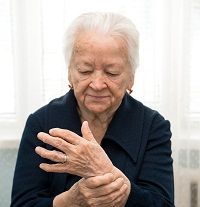Article
Physical Trauma Drives Psoriatic Arthritis Development
Author(s):
More than 70,000 patients participated in a clinical trial designed to determine the hazard risk of developing psoriatic arthritis (PsA) following physical trauma in patients with psoriasis.

More than 70,000 patients participated in a clinical trial designed to determine the hazard risk of developing psoriatic arthritis (PsA) following physical trauma in patients with psoriasis.
Senior author Thorvardur Love, MD, MMSc, PhD, and colleagues used the “deep Koebner” phenomenon — when a psoriatic lesion appears in the same location where a person with psoriasis was injured – to uncover more specific information. Previous studies highlighted the link between the chronic inflammatory disease and trauma; however, this new report analyzed a much larger participant pool that included 425,120 person-years.
“This is the first sizable population-based cohort study to determine the risk of PsA following trauma in psoriasis patients,” Love, of Landspitali University Hospital of Iceland, said in a news release.
The team gathered data from The Health Improvement Network (THIN) consisting of information on 15,416 patients with psoriasis between 1995 and 2013. The participants who also experienced physical trauma were matched up to as many as 5 of the 55,230 healthy controls based on gender, age, and entry date.
Patients were organized into specific groups according to the type of trauma they had experienced, including joint, bone, nerve, and skin. Researchers used the Cox proportional hazard model to determine the risk of each patient developing PsA following the trauma. Other factors such as alcohol consumption, smoking, and BMI were also taken into consideration. Also, the healthy controls underwent the same evaluation to find the risk of developing rheumatoid arthritis just for comparison.
According to findings published in the Annals of the Rheumatic Diseases, the PsA hazard risk in the healthy controls measured in at 22 per 10,000 and jumped for patients with psoriasis to 30 per 10,000. A total of 1,010 PsA cases were identified.
“The results of the fully adjusted cox model analysis showed that psoriasis patients exposed to trauma had an increased risk of PsA compared to controls,” the authors wrote. “With a hazard ratio (HR) of 1.32.”
The HRs climbed even higher specifically in bone (1.46) and joint (1.50) traumas. Furthermore, nerve and skin trauma did not show a statistically significant difference between the patients with psoriasis and healthy controls. The team noted that the controls did not prove to have an increased risk of rheumatoid arthritis.
“Our findings highlight the importance further study into the complex factors that lead to arthritis in psoriasis patients, as we may find ways to modify the risk once we fully understand it,” Love concluded.





